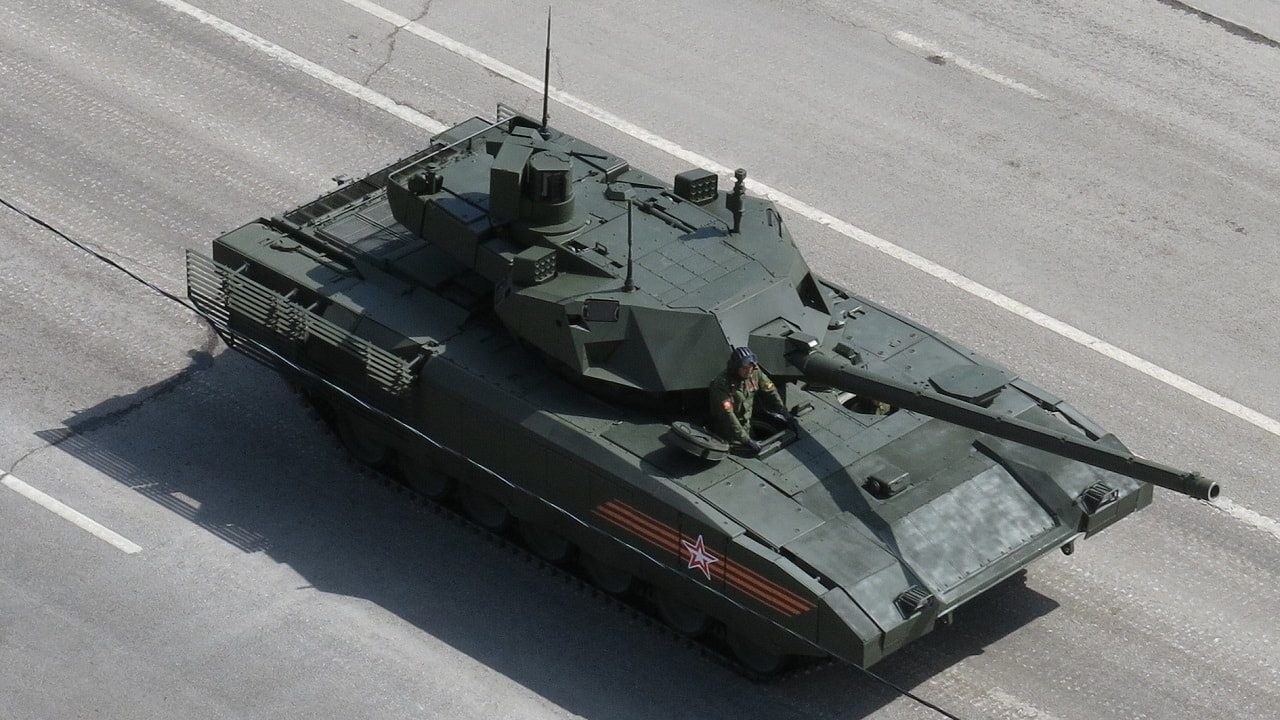Russia’s T-14 Armata tank has been heralded as the world’s best for many years, yet its actual combat performance stands somewhat at odds with its hyped reputation.
The famous Armata had only a short-lived experimental deployment in Ukraine, according to Russia’s TASS News Agency, and the experience appears to have likely been less than inspiring.
The T-14 Armata Challenge
In a broader sense, Russia has had production and development challenges with its long-in-development Armata tank, yet its brief combat appearance may present an even bigger problem.
Perhaps Russia did not want to expose the Armata to a circumstance wherein tanks and armored vehicles were getting decimated, in part to prevent its technologies from falling into Ukrainian hands. However, the Armata’s rapid withdrawal from the frontline invites speculation regarding its actual capabilities.
The Russian press has extensively written about the T-14 Armata. The platform is reportedly faster and lighter than a U.S. Army M1 Abrams tank, as it weighs only 55 tons and travels at faster speeds, affording better mobility.
The platform’s ability to travel faster and at a lighter weight means it can cross bridges, pass through urban areas, and navigate more narrowly configured passageways.
A 1,500-horsepower engine drives the T-14 Armata and the M1 Abrams, yet the Abrams has to propel an additional 15 tons of hardware.
The T-14 also has an unmanned turret, which can reduce crew size and increase survivability by removing the need for a gunner to stay at the top of the vehicle.
Like a U.S. Army Common Remotely Operated Weapons System (CROWS) might function, an unmanned turret would enable a .50-cal or crew-served weapon to be controlled and fired from under armor using tele-operation or robotic technology.
Many Russian media reports hype the T-14’s unmanned turret, composite armor, 55mph speed, and advanced weapons, yet the specific performance parameters of the weapons on the platform may remain unknown.
A pressing question related to the effectiveness of the T-14 would pertain to its thermal sights and the fidelity or relative resolution of its infrared targeting sensors.
This effectiveness can determine a tank’s lethality, as long-range, high-fidelity sensors would enable the T-14 to see and destroy enemy tanks from safer, stand-off ranges.
This ability was the primary advantage of the Abrams tanks in the Gulf War against Russian-made Iraqi T-72s, as the Abrams thermal sights could find, see, target, and destroy Iraqi tanks from distances where they were undetectable.
A Russian news report in GRU Pycckoe says the T-14 can see out to 5km and 3.5km at night, which may be difficult to confirm or verify independently.
T-14 Survivable?
Regarding survivability, a fundamental question of the T-14 pertains to the quality of its composite armor.
Should Russian innovators have identified some next-generation composite materials offering more excellent or equivalent protection at a much lower weight, the T-14 may represent a breakthrough.
However, a heavier Russian T-90 or T-72 is more likely to be more survivable, as truly high-performing lightweight composites can be challenging to identify.
According to a report several years ago in Popular Mechanics, the T-14 Armata will operate the 3UBK21 Sprinter missile, a weapon reportedly able to travel as far as 7 miles.
If true, this weapon would be roughly twice the range of the Armata’s current round, the 9M119 Refleks, which can travel 3.1 miles to hit a target.
As a matter entirely separate from its reported targeting ranges and advanced weapons capability, it seems the Russian T-14s would likely not be any less vulnerable to highly lethal Ukrainian anti-armor tactics such as Javelins, Carl Gustafs, NLAWs, and other weapons that have shown great effectiveness in destroying Russian tanks in Ukraine.
Ukrainian Tactics
Dispersed groups of dismounted Ukrainian fighters maneuvering into ambush positions to destroy tanks with shoulder-fired anti-armor weapons have shown an ability to attack and destroy Russian tanks with great effectiveness.
Using bridges, passageways, cross sections, or narrowly configured passageways, Ukrainian fighters have been able to trap and destroy Russian tanks from buildings, uneven terrain, and other obscured locations.
T-14 Aramta Photo Essay
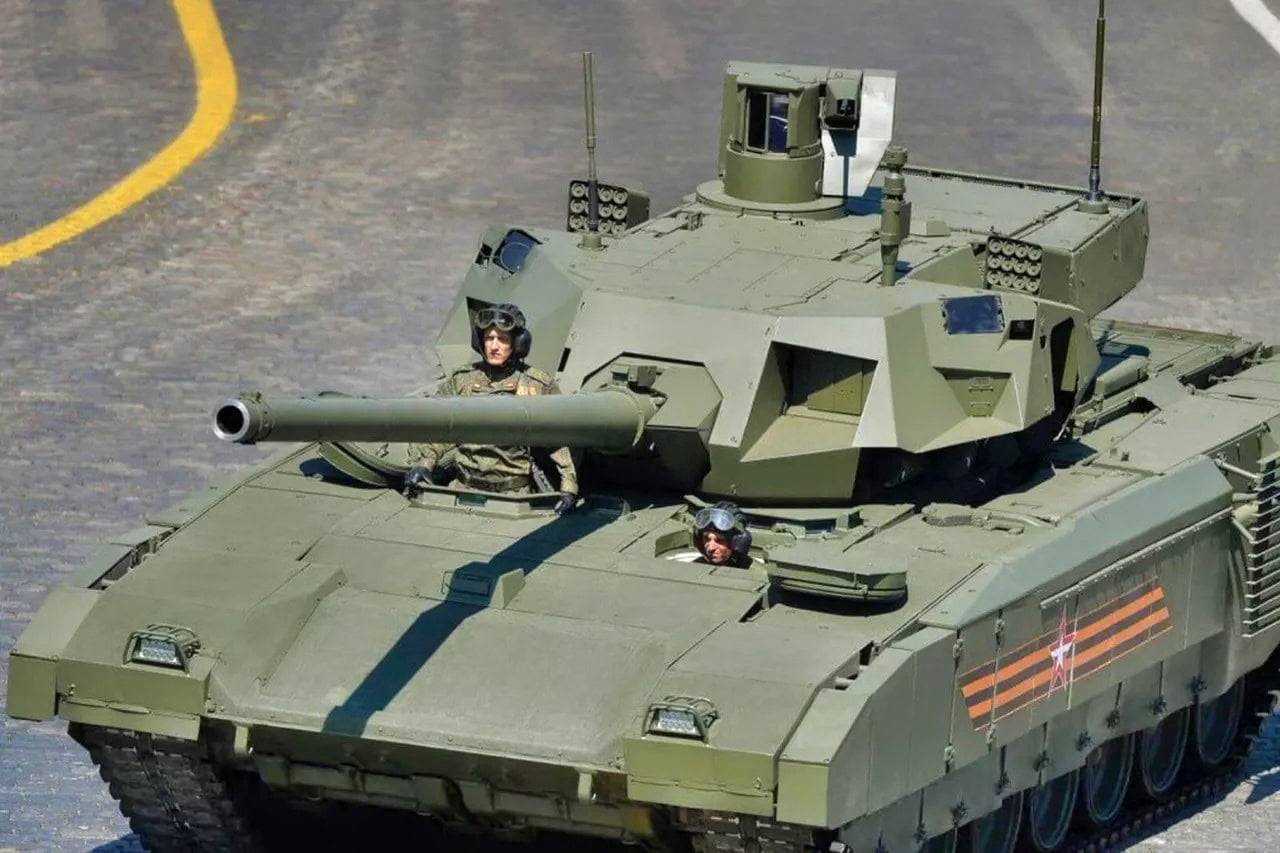
Russian T-14 Armata Tank. Image Credit: Social Media Screenshot.
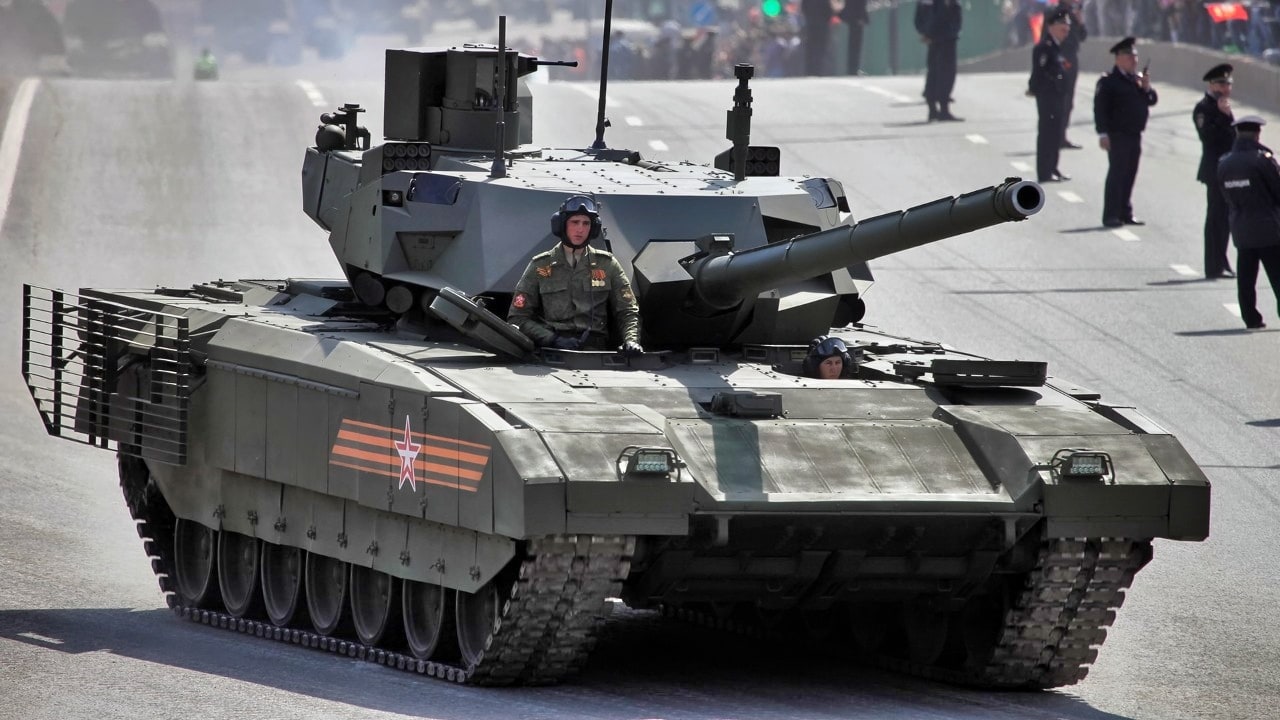
T-14 Armata Tank from Russia
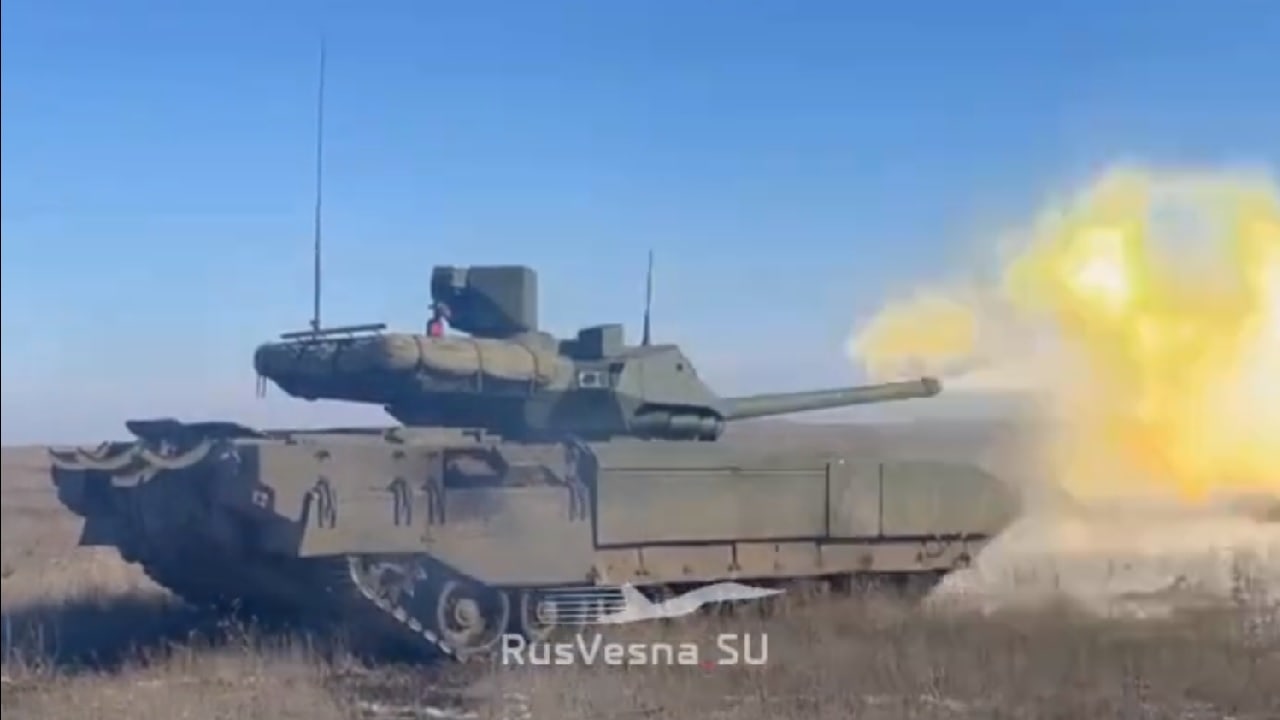
T-14 Armata Screenshot
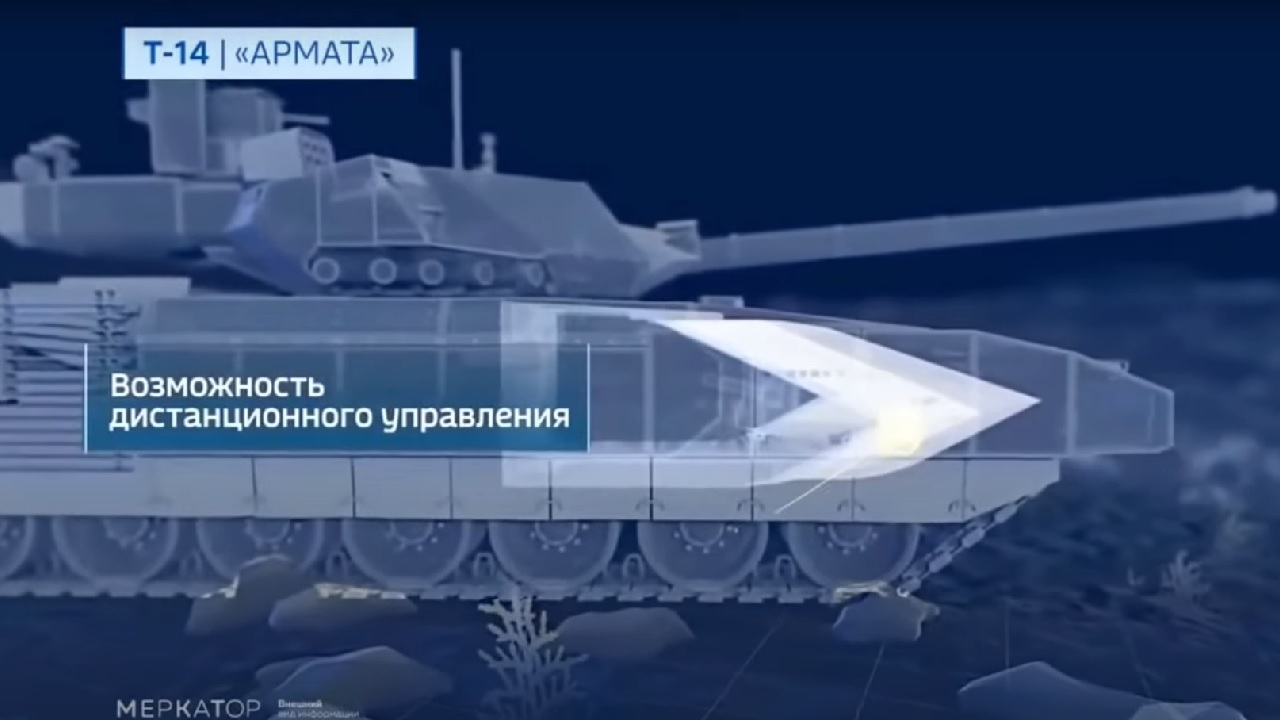
Russia T-14 Armata Tank. Image Credit: YouTube Screenshot.
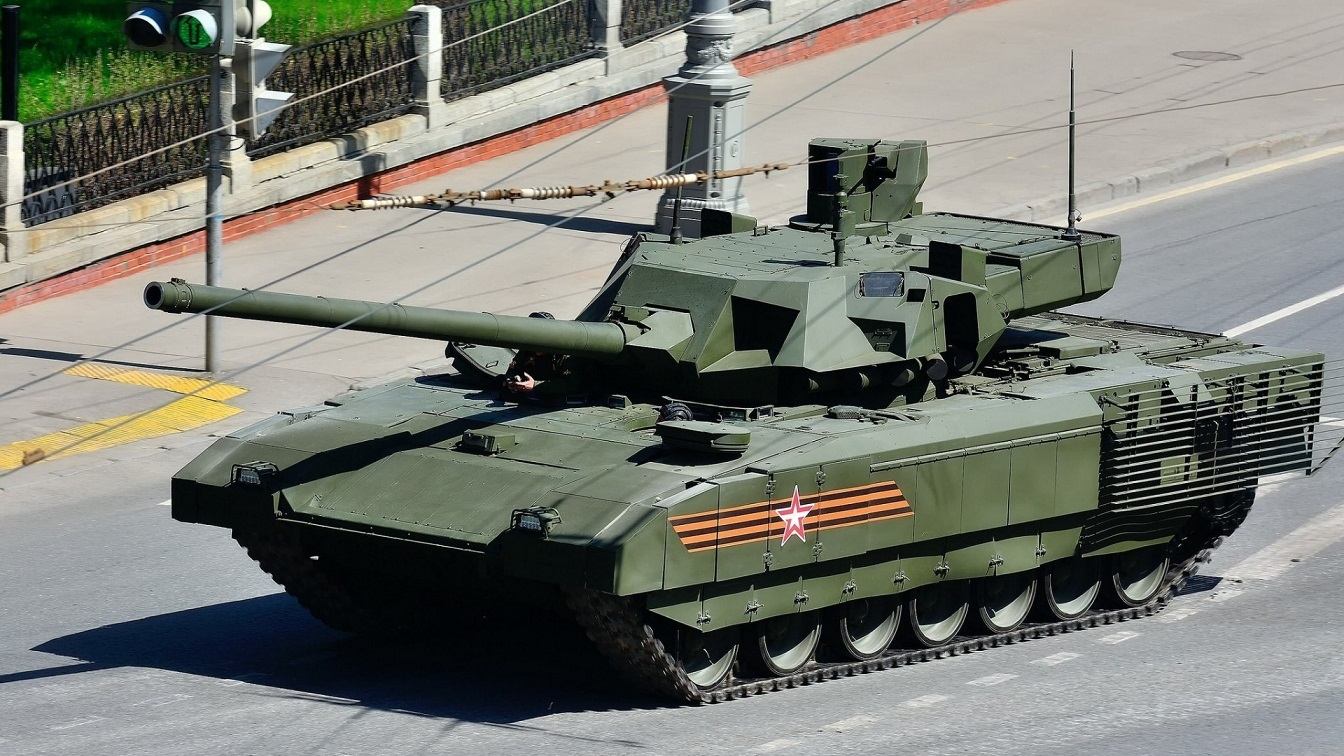
T-14 Armata Tank. Image Credit: Creative Commons.
About the Author: Kris Osborn
Kris Osborn is the Military Technology Editor of 19FortyFive and President of Warrior Maven – Center for Military Modernization. Osborn previously served at the Pentagon as a highly qualified expert in the Office of the Assistant Secretary of the Army—Acquisition, Logistics & Technology. Osborn has also worked as an anchor and on-air military specialist at national TV networks. He has appeared as a guest military expert on Fox News, MSNBC, The Military Channel, and The History Channel. He also has a Masters Degree in Comparative Literature from Columbia University.

